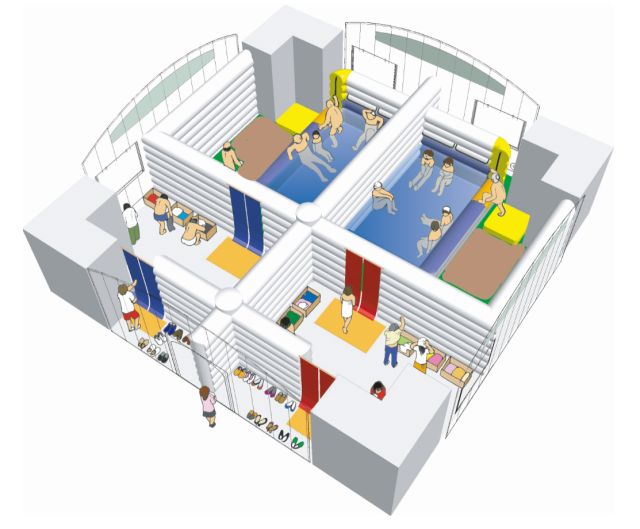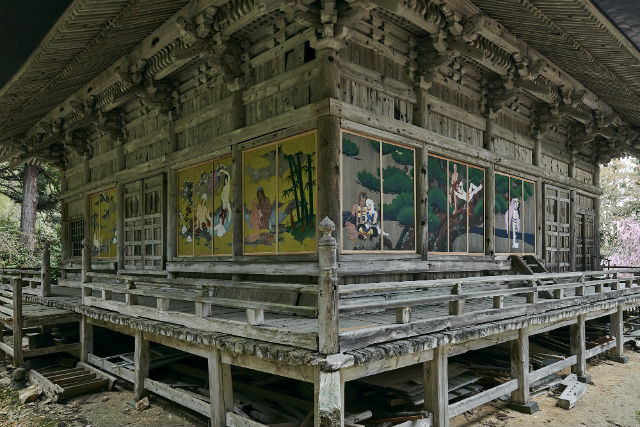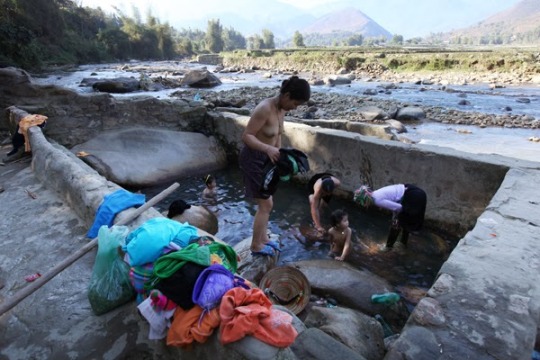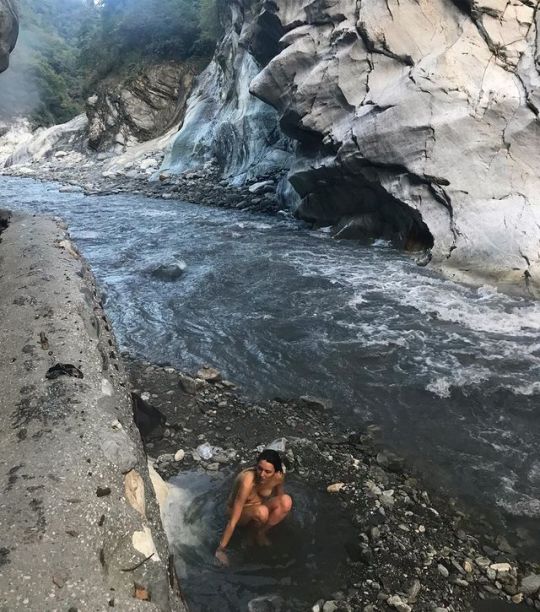Late night hot spring action by the river. Wine and Baileys was had 🍷 Lucas (bro) looking good 💪
#travel#onsen#hotspring#river#taiwan#modelshot
I would like to start this blog entry with highlighting the following: that of soaking secrets.
Especially on social media, I've seen a lot of "ssst, don't tell anyone where we are". But nonetheless, let's share the photo.
On the one hand, keeping something secret increases it's sacredness, on the other ultimately in a social world, if you believe that the soak setting is being sacked, the only real answer is social organisation. But that seems to entail a rash with many fellow soakers. Too many of us are only interested in what nature has on offer to us rather than the other way round.
Seriously! And leave the fucking glass bottles at home. This is why we can’t have nice things. #falsesummit #hotsprings #stopgeotagginghiddenlocations
In the Southeastern Asia context, there's an additional threat.
As public ownership is very poorly protected, any (pristine / primitive / undeveloped) hot springs gaining popularity is bound to be ensnared by private interests.
Privatising cuts local use, cuts social organisation / cohesion and often leaves the locals themselves as bit players in the profit seekers set-up; where the wealth created is transferred to the local capitals.
And what is the role of this blog itself?
I like to say that opposing developing hot springs is not highlighted enough. What is highlighted is often the beauty of the dwindling number of natural soaks. But with the (global) population ever increasing, spending and free time becoming more and more readily available (= good thing), the plight of many natural soaks is to be developed; the question is often only when?
I like to say that opposing developing hot springs is not highlighted enough. What is highlighted is often the beauty of the dwindling number of natural soaks. But with the (global) population ever increasing, spending and free time becoming more and more readily available (= good thing), the plight of many natural soaks is to be developed; the question is often only when?
Luckily as above in Taiwan, there might still be locations in Southeast Asia, rugged and rough and still far away from roads which might survive. Let's hope more soaks can hold out for longer.
Ironically the next subject concerns developing more and private soaking facilities.
ThinkGeoenergy (Oct. 7) highlights a recent report on the state of Victoria (Australia) and it's potential to encourage more investment in soaking.
ThinkGeoenergy (Oct. 7) highlights a recent report on the state of Victoria (Australia) and it's potential to encourage more investment in soaking.
'The report called “The Great Victorian Bathing Trail” can be downloaded here (pdf).
...
The report might as well be a blueprint for hot spring development beyond the state of Victoria in Australia'.
I similarly agree, it's an excellent report, showing how experiencing hot spring baths elsewhere on this globe can be copied and enhanced in creating more soaking opportunities in Victoria itself. But such is the inspiration from the report that using it for soaking developments elsewhere is a must.
Note that the developments in Victoria concern pumping-up geothermal water, as there are no naturally occurring soaks there.
Dilemma
Some wackier news, all from Japan.
Some wackier news, all from Japan.
The Japan Today (Nov. 4):
'Although famous throughout the country for their baths, Beppu still feels that more people ought to be visiting. However, the dilemma is that people can’t truly see how good the baths are without first actually going there. So they developed a way to instead bring the bath to the people. These Genso no Yu or “Visionary Baths” are inflatable, easy to transport anywhere in the country, and can fit four to five adults in each of the two 450-liter baths. Of course, they use 100 percent Beppu sourced water, transported in specially-designed heated tankers to keep it at a piping 40 to 42 degrees'.
Great for a winter garden party? Can't see it taking off myself, but who knows?
The Nextshark (Aug. 7) notes some controversy:
A temple in Niigata Prefecture, Japan is causing quite the stir for its decision to use erotic art depicting historical and mythical men bathing together while in the nude.
More odd initiatives from Beppu. The Asashi Shibun (Oct.
18) kicks off with an article on ordering hot spring water, undiluted
(it's quite common to order hot spring minerals to dissolve on
location):
'Beppu city-affiliated B-biz Link started a service to deliver spa water from the municipality famous for its numerous hot springs to households and facilities across Japan.
Under the Beppu Onsen Omiya initiative, the company sends anywhere from 200 liters to 4,000 liters of hot water. A household bathtub typically requires 200 to 300 liters of water'.
Costs though seem prohibitive.
Everywhere
Vietnam’s hidden treasure! 💎 #banho #sapa #laocai #vietnam #nature #hotsprings #travel #wander #explore #turisteando
Heading into the region proper.
Worldthermalsprings, according to it's instagram account, is currently in Vietnam, notably Krong Pha hot spring, Thap Ba and Binh Chau.
The instagram account is actually of better known thermalsprings.ru, this is their page on Vietnam.
They link to maps-vietnam.ru where I found this comment from the thermalsprings backers:
They link to maps-vietnam.ru where I found this comment from the thermalsprings backers:
'Your site is excellent, but I hoped that I could easily find on the map all the hot springs mentioned here, but I found about 30%. I’ll fly to Nha Trang tomorrow and travel to the hot springs. If you have the opportunity to urgently send me the coordinates of all these sources, I will be very grateful. I created the site "thermal springs of the world" and travel everywhere to hot springs. This is my hobby. Finishing all my trips at my expense. And the information is available to everyone. On November 9, I plan to visit 3 hot complexes near Nha Trang, and there is no plan further. Your map shows 3 sources to the NW from Hanoi, but there are simply no two pages. Really looking forward to help'.
Life on the soaking search road looks like this:
'Traveling to the thermal springs of Vietnam: it is difficult to travel to Southeast Asia. In Vietnam, almost no English is spoken, only spa representatives from the marketing department can speak. In hotels at the reception and ticket offices (if any) knowledge of English is minimal. So it’s impossible to plan something in advance. You go out onto the track knowing that there will be buses. Everything else is unknown. The third day of the trip, November 11, reached the main highway at 5:15, caught slipping bass, then two local buses and a motorbike to the Bin Chau resort. Another motobike and bus transfer to Mui Ne and a visit to the Mui Ne Hot Spring Center resort. I take a local bus to Fantieja, a neighboring city, walk to the highway and, after eating wonderful noodle soup, start catching a long-distance bus. They write on the Internet that they go twice a day. In fact, they drove here every 2 minutes. After 20 minutes the bus stopped, in which there were places. Agreed on a price, knowing the price from the Internet for this distance. She took her berth. Very comfortable to sleep. The blanket is thin, so you can hide with your head so that the light along the road does not interfere. At 18:45, the bus ride started and at 4:00 the next day ended. I drove 622 km during the night. At this time, motorbikes do not interfere with the bus and it flies at an average speed of 75 km / h. I had to skip one source, since I would have arrived there at one in the morning. To be continued'.
Impact
Marobo Natural Hot Springs with this special little forest nymph. Oh the people you meet ☺️ so grateful to meet and travel with you @ishtar.raven 🌞🦋🌻✨🌱
Thailand's Nation reports (Oct. 16) on sustainable tourism initiatives from concerned business on Phuket:
'Sustainability has become the key word to their survival in the face of mass tourism for many in the tourist and hospitality industry, including Phuket’s myriad of hotels and resorts. Thus, the Phuket Hotels for Island Sustaining Tourism (PHIST) forum was born.Though not solely hot spring related, it does inform you more on how tourism development is taking place and how to try to counter the negatives; a good initiative, if slightly belated.
...
While the issue of plastic usage dominated the forum, other topics relating to sustainability were also discussed.
Eric Ricaurte, founder of Singapore-based sustainability firm Greenview, outlined three main issues in mass tourism; displaced tourists, overcrowding and the backlash from the impacts caused by tourists
“First is tourists entering neighborhoods where they shouldn’t be, in residential neighborhoods and residential buildings. I’m a resident and we have too many AirBnB places in my building, and that also drives up rent,” Ricaurte said.
“Second, [there are] too many tourists. You see this in Phuket, Japan and Korea. The third is the backlash from the impacts caused. This is what we saw in Boracay, too many tourists in small destinations without the resident’s input.”
According to Ricaurte, the issues can come down to a single problem, in that “destination stakeholders not realizing the broader impacts of the individual activities of the business and private sector and the public sector”.
Pai Hot Springs
Mae Hong Son province by Clairemrphy
Back to Taiwan. The Taiwan News (Nov. 10) reports on a local festival:
'Hot spring season has kicked off at Sichongxi Hot Springs Park in Pingtung County's Checheng Township and will last from now until Feb. 9, 2020.Not on the festival menu:
The Pingtung County Government, which organized the event, has decorated Sichongxi Hot Springs Park with red maple leaves and maple leaf-shaped lights, CNA reported on Saturday. Pingtung County Commissioner Pan Men-an (潘孟安) said that the park boasts a Japanese atmosphere, with popular traditional Japanese ballads being played on the PA system'.
marianarittenhouse
R E B I R T H
I’ve officially spent 31 years on this beautiful planet. No profound insights this year…just an intention to spend the next one skinny dipping in all the waters as much as possible 🥰
Happiest day to all my birthday twins out there!! 👯♀️
marianarittenhouse#taiwan#tarokogorge #nationalpark#skinnydipping #river #nature#motherearth #birthday#naturelovers #swimming
Travel and Leisure (Nov. 13) reports on an onsen in Taiwan:
'Nothing but a tiny cotton towel protects my modesty at the steaming pool I’m about to enter. I may be in Taiwan, where hot-spring outings are usually swimwear-friendly family affairs, but here in the baths of Hoshinoya Guguan, tradition dictates I onsen the Japanese way: in my birthday suit.My initial awkwardness melts away the moment I submerge into the cypress-fringed outdoor bath. Fed by streams flowing down the craggy peak of Xueshan, East Asia’s second-highest mountain, its water is slightly alkaline and on the pleasant side of piping hot, making it the perfect introductory onsen for a novice like me.Opened in June, Hoshinoya Guguan (hoshinoya.com; doubles from NT$7,560) is the luxury resort chain’s first foray into Taiwan, and only its second resort outside of Japan, where founder Kuniji Hoshino opened his first ryokan in Nagano Prefecture in 1914. Its setting on a forested plateau in Guguan, a tiny hot-spring enclave in the island’s mountainous heartland 90 minutes west of Taichung, taps directly into the liquid treasure....The focal point is an indoor-outdoor stone bath endlessly fed by Xueshan’s hot springs, and refreshed by a forest breeze'.
Fresh
Over to Singapore.
The poorly developed hot spring of Sembawang is getting a face lift. Importantly, access will still be free. Question mark.
Over to Singapore.
The poorly developed hot spring of Sembawang is getting a face lift. Importantly, access will still be free. Question mark.
Yahoo news sg (Sep. 2):
Mothership.sg (Aug. 31) adds a photo of how the soak might pan out (minus the soaking spirits I suppose (?)):'The only natural hot spring on Singapore’s mainland has been closed for redevelopment works since August 2018, but we’ve only got a few months to go before the place reopens with a fresh new look.Sembawang Hot Spring Park’s actual construction will be completed in October, but seeing as how it’ll take a couple months to finish paving the roads leading to the park, it’ll only officially open in January 2020, the National Parks Board (NParks) told The Straits Times last Friday'.
From the Philippines the obligatory lists. Here a couple of references.
Taraletsanywhere (Oct. 15) gets to Laguna for some soaking:
'The province of Laguna is blessed to have natural hot springs. The water from these springs flows down from Mount Makiling, which is an inactive volcanic. Over the years, more and more hot spring resorts have opened up, catering to people who want to relax, unwind and soothe their tired muscles. Here are the best hot spring resorts in Laguna — for your family or barkada outing, team building or personal vacation'.
Viatravelers (Sep. 6) stays closer to the nation's capital:
'If you’re sapped of inspiration and just need a break, here are 8 hot springs in Manila to spur your relaxation. This list includes a lot of hot spring resorts from Laguna, a city dubbed the “Resort Capital of the Philippines”, and a select few from other cities near Manila'.
sheenamiyay at Balite Hot Spring, Baganga
wala akong tasa at kape😄🥵☕️
Xinhua (Sep.1) comes with what might be peculiar info, hot-spring related. But it's ultimately very tragic:
'A private plane with six passengers, including a patient and two pilots on board crashed into a private pool resort in Laguna province south of Manila on Sunday afternoon, police said.Police said the injured victims and casualties will be determined as the investigation continues.Police said two caretakers of the resort inside a subdivision in Pansol, a village in Calamba City, were injured in the accident that happened around 3 p.m. local time. They were rushed to a local hospital for treatment, police said.Pansol is famous for private hot spring resorts.
trtworld (Sep. 1) adds:
'All nine people on board a small medical evacuation plane were killed on Sunday when the aircraft crashed into a resort area south of the Philippine capital and exploded in flames, officials said.The light plane crashed into a resort compound in Pansol village in Laguna province near the foothills of Mount Makiling'.
Unwind
Malaysia then.
The Star (Jun. 6) looks at the popular Poring hot spring:
The Star (Jun. 6) looks at the popular Poring hot spring:
'Visitors to Sabah are often in search of beautiful beaches and islands such as Sipadan, Mabul and Mataking, where you can go swimming, diving or snorkelling. There are also those who seek out adventurous activities like climbing Mount Kinabalu.And then there is the Poring Hot Spring'.
Hot pool hopping 🤣 #banjaranhotsprings #retreat #hotpool #travel #hotsprings #trip #airbnb #pool
Hypeandstuff (Sep. 13) mentions the trend of Japanese onsen soaking outside of Japan has reached Malaysia:
'Being able to relax and recuperate in a Japanese hot spring bath, onsen, seems like one of the best ways to unwind after a hectic day. This traditional Japanese hot spring bath is now available in Kuala Lumpur as the first onsen spa in Malaysia, just a few hours away from Singapore. Way cheaper than flying to Japan.Urban Retreat Onsen Spa is the first of its kind in Malaysia to offer this authentic onsen service....Using mineral-rich crystalline powders extracted directly from Japan’s renowned onsen springs, you will be energized with the elements from this famed Japanese tradition. You even get to choose your very own onsen mineral for your bath. Thereafter, get to relax in your own cosy personal onsen hot tub that is traditionally enjoyed in Japanese homes, unlike the public baths'.
Tripadvisor reviewers rave about the place, but I read only reviews of the massages.
Sun Daily (Sep. 6) reports on upgrading taking place in Gadek:
'Gadek Hot Spring will be given a RM17 million makeover and named Gadek Wellness and Spa Resort, Malacca Chief Minister, Adly Zahari, told reporters today.It is expected to be ready in early 2021 and will come with a 25-room hotel, chalets with a private hot spring pool, traditional treatment room and more.“The rebranding and uniqueness of this place will turn it into an iconic tourist spot for Alor Gajah, while offering job and business opportunities in Gadek'.
Purified
Sangat asik mandi air panas alami (belerang), sambil menikmati sejuknya udara pagi hari di Sidebu-debu, BERASTAGIKonon menurut mitos mandi di air belerang ini bisa menyembuhkan segala macam penyakit loh guyss...Lokasi: Hot spring pesona Sibayak view Pemandian air panas sidebu debu, BerastagiRepost: adventurewith_ashley.#sidebudebu #hotspring #sibayak #travel #traveler #travellingsumut #exploresumut #berastagi #exploreindonesia #wonderfulindonesiaSeveral issues on Indonesian soaking.
Starting off with Java and this unexpected news. The Jakarta Post (Oct. 3):
'A rare jaladwara (waterway segment) made of stone that resembles a Garuda and believed to date back to before the Majapahit era was found during an excavation of the ancient petirtaan (hot spring) in Sumberbeji village, Ngoro district, Jombang regency, East Java'.
It's a bit unclear whether it is really a hot spring; the term petirtaan refers to a bath, mostly for nobility (source), though with a spring. A jaladwara is a spout.
Majapahit refers to an era of more than 500 years ago when the eastern part of Java was the center of a in size differing Hindu (-Bhudist?) empire which in it's heyday ruled much of the Southeast Asian archipelago's (source).
More from Java. Indonesia.tripcanvas (Oct. 25):
All presented as resorts, nothing natural.'Here’s an overview of our guide to hot springs around Bandung and Garut area (tap to scroll to the relevant section)':
Then Bali. Traveltriangle (Jul. 26) with another list:
Amazingly, all but a few of the presented photo's are of the incorrect location. Disregard this article.'Hot springs are very calming to the body and the soul. Check out our list of the best hot springs in Bali which will be a relaxing getaway on your next trip to Bali'.
The Traveller.com.au (Aug. 19) looks at the broader implications of the tourist industry on the island:
Apparently without underwear. They apologized, so all is forgiven.'Badly behaved visitors to Bali will be sent home or face "purification rituals" for disrespecting sacred sites, officials said yesterday.The warning came after a Czech couple filmed themselves splashing each other with holy water at a temple on the Indonesian holiday island'.
It's a prelude to the next snippet, sacredness. ThinkGeoenergy (Sep. 20) reports on a Bahasa article in which is mentioned that the Balinese local government will not approve geothermal power systems:
'... the regional governor Wayan Koster has confirmed that the geothermal power plant project in Bedugul, Tabanan, will be stopped. Koster claimed to have spoken with the Minister of Energy and Mineral Resources (ESDM) Ignasius Jonan.
“In addition, related to sensitive issues related to geothermal steam power plants in Bedugul. The Minister of Energy and Mineral Resources was willing to continue, I ask him not to continue,” said Koster in his one-year remarks at an event in Bali earlier this month.
...
The concerns mention continue to center around the sacredness of the project site'.
ThinkGeoenergy comments:
'This continues the endless story about this project, which is not quite understandable for outsiders. With the economic growth of Bali, mostly through tourism, the energy demand has increased and makes the power supply by cable from Java a factor of increasing instability for Bali. Burning palm oil essentially also creates challenges, not only in the constant supply of the oil, but also emissions that would surely be an issue for the experience of Bali for tourists and the local population. Geothermal energy provides a great opportunity tapping local resources for power generation, and a clean one. Naturally, the religious implications and approach to stakeholder engagement locally is important, but it is sad to see that no consensus can be found on this project'.More.
ThinkGeoenergy has a report (Nov. 8) on a recent IBRD / World Bank publication titled Rapid Environmental and Social Assessment of Geothermal Development in Conservation Forest Areas in Indonesia.
'Most geothermal potential in Indonesia is in or close to forest areas. This has raised societal concerns about environmental and social impacts, especially in forests that play an important role in supplying fresh water, harbour endangered wildlife, or have high cultural or religious values. Environmental and social impacts and risks associated with geothermal power development are complex and significant and the degree to which these risks and impacts vary between geothermal power projects is not well understood.
...
The key finding is that project access roads are the major cause of social and environmental risks and impacts associated with geothermal power development in forest areas.
...
To get about 10 km of project access roads, 30 hectares of forest clearing is needed, while about 10 km2 of forest is indirectly impacted through the effects of road-facilitated hunting, illegal logging, use of fire, and other detrimental activities'.
Finally to Burma. Instagrammer hide_onsen_packer has two posts on hot spring visits in Myanmar: Khaung Daing Natural Hot Spring and Taunggyi:
hide_onsen_packer (google translated):
Inle Lake near Hot Springs Tour ♨️④② Birisshu hot spring bathing charge 500 chatopen-air bath man 3 F 2, there is a water storage tank for bathing there was a heat Me and lukewarm There, Netsume local people have not enteredin about 38 ℃ and 46 ℃ Japanese would be a good Me heat put cleaning is a feeling that is not in good condition but without Well problem where is the source putamen not seems to have been caught a hot spring there was also the way private bath not in a state to put have crazy dirtynow are using instead dressing room good shopkeeper is a friendly person! English is not ... throughCOSPA nice open-air bath 👍 Directions 💨entering the village to mark the red sign from Taunggyigo straight green sign, there is the entrance you see a blue sign on the left






















This comment has been removed by a blog administrator.
ReplyDelete